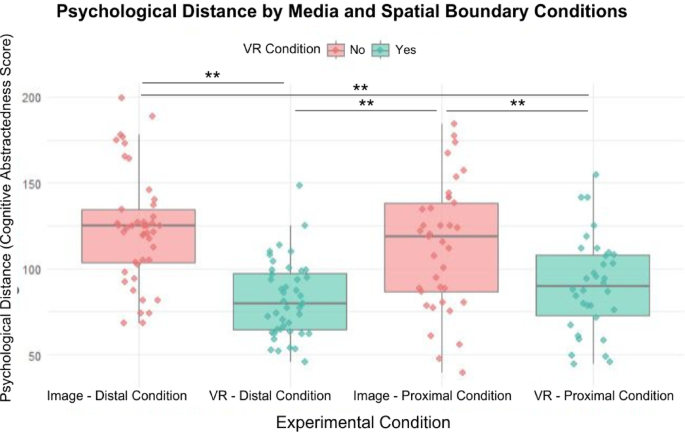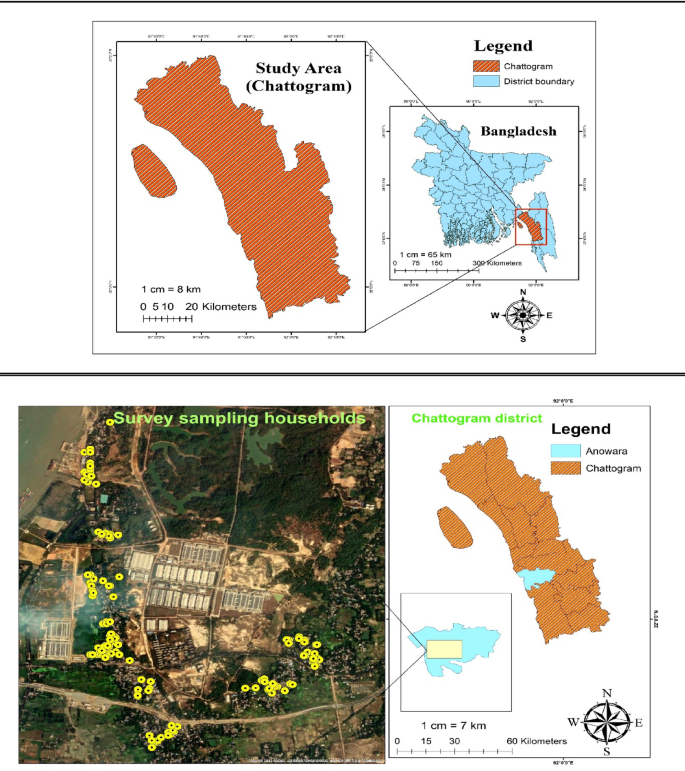Report on the Household-Level Economic Impacts of Climate Inaction
A BPEA Study Analysis in the Context of the Sustainable Development Goals
Introduction: A New Perspective on Climate Costs and Sustainable Development
A new study from the Brookings Papers on Economic Activity (BPEA) shifts the focus of climate change economic analysis from long-term, national costs to the immediate, household-level burdens. Authored by Kimberly Clausing, Christopher Knittel, and Catherine Wolfram, the research quantifies the current costs U.S. households bear due to climate inaction. This approach provides critical data for understanding the intersection of climate change with key Sustainable Development Goals (SDGs), particularly SDG 13 (Climate Action), SDG 10 (Reduced Inequalities), and SDG 3 (Good Health and Well-being). The study investigates the distributional effects of these costs, revealing how the failure to act on climate change disproportionately harms the most vulnerable populations, thereby hindering progress towards SDG 1 (No Poverty).
Methodology: Quantifying the Current Burden of Climate Change
The study assesses a range of costs impacting household budgets and well-being. Unlike previous literature that focused heavily on direct temperature effects, this research found that the most significant financial and health burdens stem from the indirect consequences of a warming planet. The analysis incorporated conservative and less conservative estimates to address the challenge of attributing specific events to climate change.
Primary Cost Vectors Analyzed:
- Natural Disaster-Related Costs: These were identified as the most significant drivers of household costs.
- Homeowners’ Insurance: Rising premiums due to increased frequency and intensity of storms, wildfires, and floods. This directly impacts household financial stability, a concern for SDG 11 (Sustainable Cities and Communities).
- Mortality from Wildfire Smoke: Costs associated with premature death due to exposure to fine particulate matter from wildfires, a direct threat to SDG 3 (Good Health and Well-being).
- Government Disaster Recovery: Costs borne by federal, state, and local governments for cleanup and aid, which are passed on to households through taxes.
- Direct Temperature-Related Costs: These were found to have a smaller net impact on U.S. households currently.
- Energy Costs: Increased spending on air conditioning in the summer is largely offset by decreased spending on heating in the winter.
- Temperature-Related Mortality: Increased deaths from extreme heat are partially offset by a reduction in deaths from extreme cold.
Key Findings: Disproportionate Impacts on Vulnerable Populations
The research reveals that the costs of climate change are not evenly distributed, creating significant challenges for achieving SDG 10 (Reduced Inequalities). The typical household faces annual costs between $500 and $600, with approximately 10% of households experiencing costs exceeding $900 per year.
Geographic and Socioeconomic Disparities:
- Concentrated Geographic Impact: The highest costs are concentrated in regions prone to specific natural disasters.
- Rural California: Experiences high costs from wildfires, which drive up insurance premiums and increase mortality rates from smoke inhalation.
- The Gulf Coast: Suffers from frequent floods and hurricanes, leading to elevated insurance costs and property damage.
- Regressive Financial Burden: The study demonstrates that climate inaction functions as a regressive tax. The counties most affected by these disasters are, on average, poorer than typical counties. Costs such as higher insurance premiums constitute a much larger percentage of a low-income household’s budget, threatening financial stability and undermining progress on SDG 1 (No Poverty).
- Health Inequities: Mortality costs from poor air quality disproportionately affect communities with fewer resources to mitigate exposure, exacerbating health disparities and challenging the core principles of SDG 3 (Good Health and Well-being).
Policy Implications for Advancing the Sustainable Development Goals
The study’s findings provide a compelling argument for immediate and robust policy responses that align with the 2030 Agenda for Sustainable Development.
Strengthening Climate Action (SDG 13)
By demonstrating that the current costs of inaction are already substantial—and potentially greater than the costs of implementing climate policy—the research makes a strong economic case for aggressive climate action. It reframes the policy debate from avoiding future costs to mitigating present-day financial and health burdens on citizens.
Designing Equitable and Sustainable Policies (SDG 10 & SDG 11)
The findings underscore the need for climate policies that are designed with equity at their core. Policymakers can leverage this data to:
- Develop progressive climate solutions, such as carbon pricing with dividend programs that rebate revenue to households, protecting low-income families from increased energy costs.
- Implement geographically targeted adaptation and resilience measures, such as improved flood management systems in vulnerable areas, to advance SDG 11 (Sustainable Cities and Communities).
- Recognize that inaction has severe distributional consequences, making equitable climate policy essential for achieving SDG 10.
Conclusion: The Imperative for Integrated Climate and Development Policy
This BPEA study provides critical evidence that the economic and health consequences of climate change are already impacting U.S. households, with the heaviest burden falling on the most vulnerable. The findings highlight that climate inaction directly undermines progress on multiple Sustainable Development Goals, including those related to poverty, health, inequality, and sustainable communities. To build a resilient and equitable future, policymakers must address the costs of climate inaction through integrated policies that advance both climate and sustainable development objectives simultaneously.
Analysis of Sustainable Development Goals in the Article
1. Which SDGs are addressed or connected to the issues highlighted in the article?
-
SDG 1: No Poverty
- The article focuses on the economic burden of climate change on households, particularly how these costs disproportionately affect vulnerable populations. It states, “These extremes have a disproportionate impact on poorer households,” directly linking climate inaction to increased financial strain on the poor.
-
SDG 3: Good Health and Well-being
- The article explicitly discusses the health impacts of climate change, mentioning “mortality costs due of wildfire smoke” and “households’ exposure to fine particulate matter from wildfire smoke.” It also notes that heat can cause mortality and that wildfire smoke leads to “increased emergency room visits,” connecting environmental degradation directly to public health outcomes.
-
SDG 10: Reduced Inequalities
- A central theme of the article is the distributional effect of climate change. The study’s title, “Who bears the burden of climate inaction?” and its focus on how costs vary “by region and socioeconomic status” highlight the goal of reducing inequality. The finding that poorer counties are more affected and that costs represent “a bigger share of a poorer person’s consumption bundle” underscores this connection.
-
SDG 11: Sustainable Cities and Communities
- The article addresses the resilience of communities to climate-related disasters. It discusses the impact of wildfires, storms, and floods on households, particularly through “rising insurance costs along coastlines” and damage from natural disasters in areas like “rural California” and the “Gulf Coast.” This relates to making human settlements safer and more resilient.
-
SDG 13: Climate Action
- The entire article is centered on climate change, its current impacts, and the need for policy action. It examines the “economic impacts of climate change,” the “costs of not dealing with climate,” and the importance of strengthening resilience to climate-related hazards and natural disasters. The discussion of carbon pricing and other policy measures directly relates to taking urgent action to combat climate change.
2. What specific targets under those SDGs can be identified based on the article’s content?
-
Target 1.5: By 2030, build the resilience of the poor and those in vulnerable situations and reduce their exposure and vulnerability to climate-related extreme events and other economic, social and environmental shocks and disasters.
- The article’s analysis of how natural disasters and rising insurance costs create a disproportionate financial burden on “poorer households” directly relates to this target. It quantifies the economic shocks faced by vulnerable populations due to climate change.
-
Target 3.9: By 2030, substantially reduce the number of deaths and illnesses from hazardous chemicals and air, water and soil pollution and contamination.
- The article identifies “mortality associated with increased particulate matter from fires” as a major cost. This directly aligns with the target of reducing deaths from air pollution, as wildfire smoke is a significant source of contamination.
-
Target 10.2: By 2030, empower and promote the social, economic and political inclusion of all, irrespective of … economic or other status.
- The study’s focus on the “distributional effects” of climate change inaction, showing that costs fall more heavily on poorer counties and households, highlights the economic exclusion and inequality that this target aims to address.
-
Target 11.5: By 2030, significantly reduce the number of deaths and the number of people affected and substantially decrease the direct economic losses… caused by disasters… with a focus on protecting the poor and people in vulnerable situations.
- The article quantifies the economic losses from disasters through “homeowners’ insurance” costs and government cleanup expenses. It also measures the human cost through “mortality” from events like wildfires, directly aligning with the goals of this target.
-
Target 13.1: Strengthen resilience and adaptive capacity to climate-related hazards and natural disasters in all countries.
- The article’s core finding is that the “vast majority of [costs] are related to natural disasters.” It discusses impacts from storms, wildfires, and floods, emphasizing the need to manage these hazards and adapt to their increasing frequency and intensity.
3. Are there any indicators mentioned or implied in the article that can be used to measure progress towards the identified targets?
-
Direct Economic Loss Attributed to Disasters:
- The article provides specific monetary values for climate-related costs. It mentions that for a “typical household, you know, it’s between $500-600” per year and that “increased home insurance costs, which are about $350 in the less conservative estimate.” These figures serve as direct indicators of economic loss.
-
Mortality Rate Attributed to Disasters and Air Pollution:
- The study explicitly measures “mortality costs due of wildfire smoke” and “mortality associated with increased particulate matter from fires.” The number of deaths or the economic valuation of mortality from these climate-related events is a key indicator used in the analysis.
-
Distribution of Climate Costs by Income Level and Geography:
- The article implies an indicator by analyzing how costs vary “across geography or across income levels.” It finds that “poorer counties” and regions like “rural California” and the “Gulf Coast” bear higher costs. Measuring the ratio of climate-related costs to household income for different quintiles would be a specific indicator of this disproportionate impact.
-
Household Expenditure on Climate Adaptation and Mitigation:
- The article mentions costs related to “air conditioning” and “homeowners’ insurance.” Tracking household spending on these items, which are forms of adaptation to climate change, can serve as an indicator of the financial burden households are facing.
4. Summary Table of SDGs, Targets, and Indicators
| SDGs | Targets | Indicators |
|---|---|---|
| SDG 1: No Poverty | 1.5: Build the resilience of the poor and reduce their vulnerability to climate-related extreme events. | Proportion of household income spent on climate-related costs (e.g., insurance), particularly for lower-income groups. |
| SDG 3: Good Health and Well-being | 3.9: Substantially reduce deaths and illnesses from air pollution and contamination. | Mortality rate attributed to fine particulate matter from wildfire smoke; Number of emergency room visits following smoke events. |
| SDG 10: Reduced Inequalities | 10.2: Promote social and economic inclusion of all, irrespective of economic status. | Geographic and income-level distribution of climate-related costs, showing the disproportionate burden on poorer counties and households. |
| SDG 11: Sustainable Cities and Communities | 11.5: Significantly reduce deaths and direct economic losses caused by disasters, protecting the poor. | Annual household costs from climate change (estimated at $500-$600); Increase in homeowners’ insurance premiums due to disaster risk. |
| SDG 13: Climate Action | 13.1: Strengthen resilience and adaptive capacity to climate-related hazards and natural disasters. | Costs borne by state, local, and federal governments for disaster cleanup; Economic losses from natural disasters such as wildfires, storms, and floods. |
Source: brookings.edu






